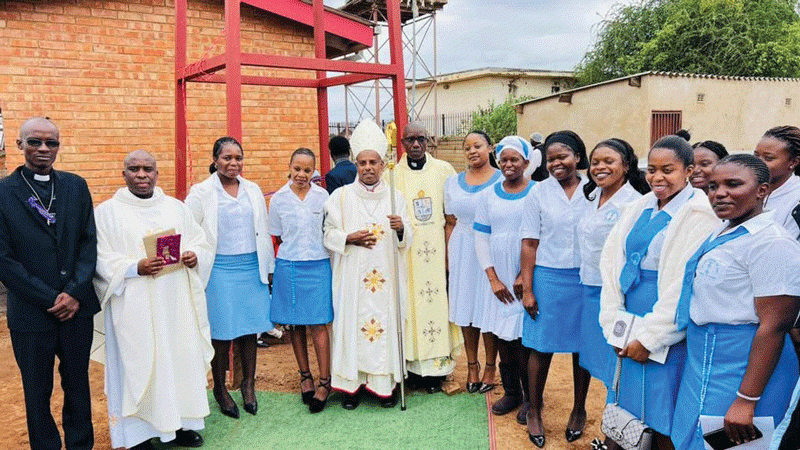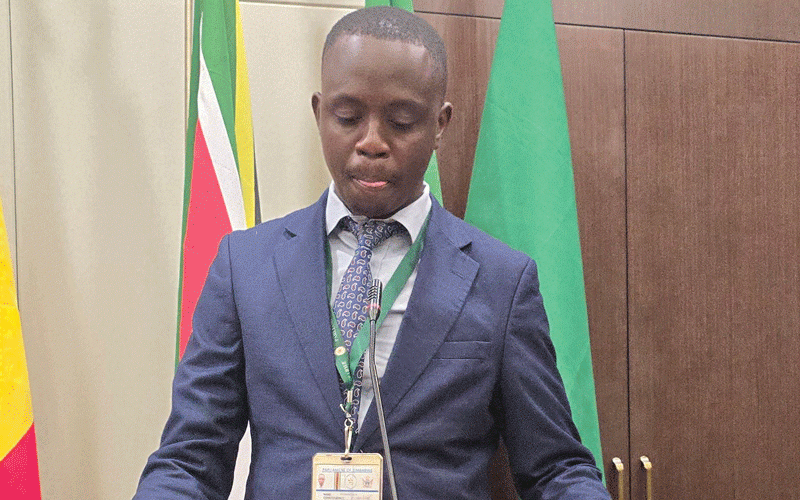
The skies over Emganwini, Bulawayo, hung heavy with clouds on St. Martin’s Day the kind of grey that softens the light and deepens reflection.
The weather seemed fitting for a day that spoke not of spectacle, but of spirit of quiet transformation, human renewal, and the fragile beauty of second chances.
Despite the overcast sky, the grounds of St. Martin’s were alive with color, song, and purpose.
The gathering brought together parishioners, community members, and a special delegation from the Zimbabwe Prisons and Correctional Services (ZPCS) the Gospel and Imbube Groups, comprising inmates who performed with passion and grace.
Their presence transformed the celebration into something far deeper: a living reminder that prisons are not only spaces of confinement, but of rehabilitation, hope, and rebirth.
In their address, ZPCS representatives spoke of the institution’s evolving role in promoting transformation and reducing recidivism among offenders through spiritual growth, education, and artistic expression.
Their performances rich in rhythm and harmony revealed this truth more powerfully than words ever could.
Every song carried a pulse of redemption, a testament that healing and dignity can be rebuilt even from within walls once marked by pain.
- Revisiting Majaivana’s last show… ‘We made huge losses’
- Ngozi Mine’s young mothers suffering in silence
- Edutainment mix: The nexus of music and cultural identity
- ChiTown acting mayor blocks election
Keep Reading
When churches invite inmates to liturgical, cultural, and socially meaningful events, they are performing more than a spiritual duty.
They are staging an act of social reconstruction.
In a world where incarceration often shrinks identity to a sentence number, these invitations become interventions that restore humanity, voice, and memory.
Churches often serve as gateways to artistic expression, providing one of the most powerful rehabilitative tools available to inmates an avenue where creativity becomes both refuge and reconstruction.
Through sacred music, liturgical dance, choir participation, icon painting, and the crafting of religious symbols, incarcerated individuals rediscover parts of themselves that punishment often suppresses: imagination, dignity, and agency.
When analysed deeply, the link between church involvement and arts-based healing becomes clear, for art has the unique ability to externalise inner conflict; prison walls may lock the body in, but artistic expression allows emotions, memories, and wounds to move outward safely and meaningfully.
In this process, art also restores identity, replacing the anonymity of an inmate number with the personal imprint of a signature, a voice, a story, or a performance.
Within church-led artistic spaces, collaboration naturally emerges choirs, drama groups, and craft circles create micro-communities where individuals relearn trust, empathy, and the emotional literacy needed for life beyond incarceration.
At a spiritual level, art complements faith formation, often becoming the medium through which inmates truly encounter God not through formal sermons, but through rhythm, song, colour, and the shared rituals that make the sacred tangible.
Ultimately, these artistic and cultural practices act as memory repair, helping inmates reorder painful histories and reinterpret their life narratives in ways that affirm growth, humanity, and the possibility of transformation.
The liturgy, carefully organised and reverent, pulsed with energy. The choir sang with luminous strength, their harmonies weaving a tapestry of joy and solemnity.
The cloudy skies seemed to listen, echoing back the resonance of faith in the air.
Archbishop Alex Thomas, presiding with quiet authority, gave a message that lingered in the heart.
He addressed the confirmants, a diverse group of young and old, encouraging them to use their opportunities and talents with purpose to avoid being overtaken by worldly distractions that fade, and instead to seek self-actualisation, growth, and service.
His homily balanced warmth with challenge, a reminder that fulfillment is found not in accumulation but in awakening in living consciously and compassionately.
In their reflections, Fr. Thabo Dube and Fr. Cephas Gumbo expanded on this message.
Fr. Dube spoke about the importance of gatherings like these as spiritual meeting points, places where community and faith intertwine to heal both the individual and the collective.
“This is where the Church breathes,” he said, “in the laughter, in the singing, in the forgiveness that happens quietly between people.”
Fr. Gumbo’s words carried a gentle urgency. He reflected on how spiritual renewal must extend beyond the altar into homes, workplaces, and even correctional facilities. “Faith without action,” he said, “is like a song never sung. It must find its rhythm in how we live and lift one another.” His reminder cast the day’s celebration as more than a ritual it was a rehearsal for a better world.
When Insizwa Zedlaladi took the stage, their performance electrified the overcast afternoon.
Their drumming, voices, and movement merged into a cultural prayer a reminder that art, too, is a form of worship.
Their rhythm intertwined with that of the ZPCS choir, bridging the free and the confined, the sacred and the ordinary.
It was a sonic metaphor for unity a statement that healing, like music, is communal.
As the day drew to a close, the clouds broke slightly, allowing a soft light to touch the crowd. It was not bright, but warm as though the heavens themselves had joined the applause.
What lingered after the final hymn was not simply celebration, but communion a shared sense of belonging and renewal.
St. Martin’s Day in Mganwini became a living parable of what faith, community, and art can do together.
It reminded all present that healing begins in fellowship, that redemption thrives in trust, and that even under hardships.
*Raymond Millagre Langa is the Founder of Indebo Edutainment Trust, an abstractionist, and an independent researcher.











